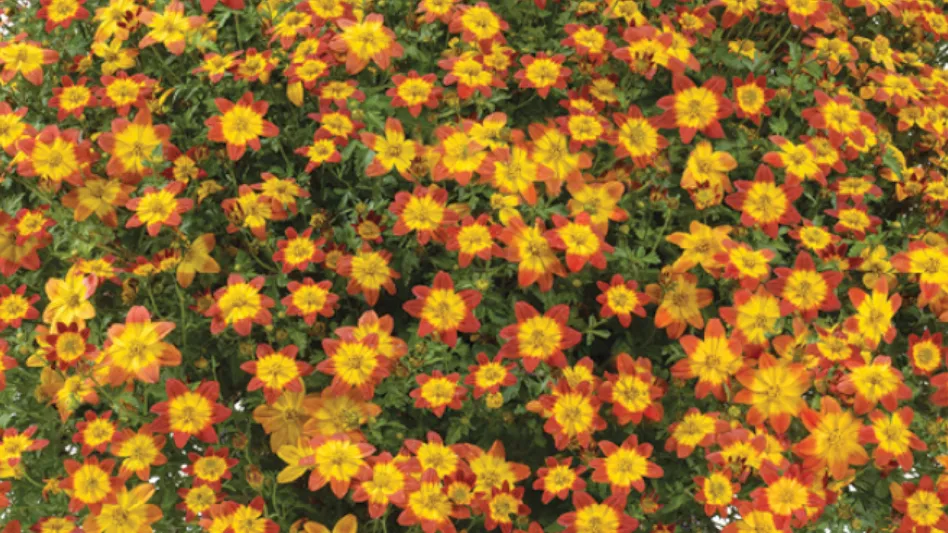
When you’re looking for the direction culinary produce trends are moving, a close examination of tasting menus at fine dining establishments is always an enlightening place to start. What chefs do with greens at high-end restaurants is usually ambitious and pushes boundaries. While we can’t expect every restaurant or home cook to be equally ambitious or picky, many cutting-edge food trends — and produce varieties — eventually manifest in more manageable forms in conventional restaurants, the grocery store and, eventually, the home kitchen.
You can equate fine dining chefs, and the unique dishes they create, to fashion designers and haute couture. The fantastical and beautiful creations that make it down the runway don’t look exactly like what ends up in your closet a year or two later, but they do inspire and inform what you eventually put on your back — and your plate. Miranda Priestly will no doubt smugly remind you if you deign to suggest otherwise.
So, what are executive chefs going for these days when it comes to greens and microgreens? Small size, big flavor, pretty color. If you’re looking to elevate and differentiate your greens and microgreen selection, consider going in for tiny herbs that both look interesting and pack big flavor. And don’t skip the flowers.
Distinctive herbs and greens to shake up your microgreens offerings:
papalo_fmt.png)
Papalo
Also called summer cilantro, quilquiña, yerba porosa, killi and papaloquelite, this old-school Mexican herb is a heat-loving alternative to cilantro. Papalo offers a bold flavor that is more complex than cilantro, with a mix of both bitter and citrusy flavors. The young leaves are milder than more mature leaves, so papalo may be a good alternative for the anti-cilantro crowd.
bronze_fennel_fmt.png)
Bronze fennel
A substantial beauty in the garden, bronze fennel doesn’t exactly come to mind when one thinks of tiny microgreens. But the sweet fennel flavor — milder in young seedlings — combined with the beautiful bronze feathery leaves and stems make for a unique culinary statement. Bronze fennel microgreens are currently in fashion for flavoring desserts.
Nepitella_fmt.png)
Nepitella
Want to up your mint game? Nepitella, also known as lesser calamint, offers an interesting combination of mint and oregano flavors. Nepitella is a versatile herb microgreen perfect for Italian cuisine and flavoring entrees, soups and stews. As a fancy garnish it’s also perfect for dressing up desserts and cocktails.
mitsuba_fmt.png)
Mitsuba
Also called hornwort or Japanese wild parsley, this aromatic Japanese native herb makes excellent microgreens. The leaves are trefoil shaped — like flat-leafed parsley and cilantro — and fragrant. It offers a parsley-like flavor, but richer.
Micro cressida
Also called micro cress, curly cress or peppergrass, these tiny microgreens pack a peppery flavor. Add micro cressida to sandwiches, salads or other dishes and cocktails where you want a spicy flavor.
Wood sorrel, red veined
The lovely shape of wood sorrel leaves, especially the red veined wood sorrel, elevates the look of any dish. Their sharp tangy flavor and foliage contrast makes them a good substitute for a traditional microgreens blend. Wood sorrel is also used for garnishing desserts.
Wood_sorrel_fmt.png)
Anise hyssop
The small delicate leaves of anise hyssop are light green and tinged with pink, making them a pretty garnish for entrees and cocktails alike. Anise hyssop microgreens will have a strong black licorice flavor with accents of mint, lemon, sage and pepper.
anise_hyssop_fmt.png)
Epazote
While mature epazote plants import an intense citrus flavor commonly used in South American cuisine, the microgreens will offer up a milder, more tender flavor. Think citrus with a light dash of pepper. The little kick of spice has this green going by the common names of hedge mustard and Jerusalem parsley.Dwarf nasturtium
The young round leaves of dwarf nasturtium microgreens are so cute you just might want to put them on everything. Microgreens of nasturtium will impart a tangy mustard flavor, perfect for salads, sandwiches or anything else you might dress with mustard.
Keep the blooms
It’s not all about the foliage when it comes to new microgreen trends. It’s also about the teeny, tiny flowers that accompany the herb greens. The tiny flowers of nepitella, oxalis (wood sorrel) flowers are also in demand, often still attached to the herb snip or microgreen, if the microgreens have been forced into flower. Tangerine Lace microgreens are in demand with their tiny marigold flowers still attached.
Always consider the aesthetics along with taste and aroma when choosing your microgreen varieties. Fashion and flavor go hand in hand. Chefs, diners and home cooks alike want microgreens that taste great and look pretty.
Leslie (CPH) owns Halleck Horticultural, LLC, through which she provides horticultural consulting, business and marketing strategy, product development and branding, and content creation for green industry companies. lesliehalleck.com

Explore the December 2019 Issue
Check out more from this issue and find you next story to read.
Latest from Produce Grower
- UF/IFAS researchers work to make beer hops a Florida crop
- Nature's Miracle announces initial shipments of "MiracleTainer" series container farm
- Local Bounti opens new high-tech controlled environment agriculture facility in Pasco, Washington
- NatureSweet responds after ruling by U.S. Court of International Trade that invalidates tax on tomato imports from Mexico
- Former Danone executive becomes chief operating officer at NatureSweet
- FMI welcomes updates to WIC food package increasing fruit and vegetable benefits
- Passion grows progress
- U.S. Department of Labor finalizes farmworker protection rule





